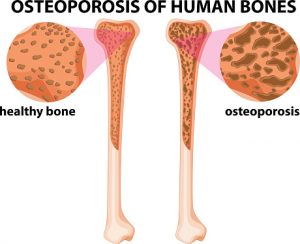 Osteoporosis is a bone disease that commonly affects post-menopausal women, and with the rising number of elderly, cases of osteoporosis are on the rise. It can lead to devastating fractures and disability for seniors, which not only negatively impact their quality of life, but can increase the risk of illness or disease.
Osteoporosis is a bone disease that commonly affects post-menopausal women, and with the rising number of elderly, cases of osteoporosis are on the rise. It can lead to devastating fractures and disability for seniors, which not only negatively impact their quality of life, but can increase the risk of illness or disease.
Although there is treatment available for osteoporosis, a new review of the treatments available have uncovered serious gaps. In the review, titled Osteoporosis International, the researchers outlined the challenges that healthcare officials and policy makers face in providing adequate care for osteoporosis.
Advertisement
Not only did the researchers highlight gaps in treatment, but they also discuss possible solutions to address these issues.
The researchers outlined four main themes based on their findings, which were:
- case finding and management of individuals at high risk of fracture
- public awareness of osteoporosis and fragility fractures
- reimbursement and health system policy
- epidemiology of fracture in the developing world
Co-author Professor Eugene McCloskey explained, “This review identifies, among other challenges, the current gaps in delivery of best clinical practice, low levels of public awareness, and insufficient access and funding for diagnosis and treatment. Sadly, these gaps are a clear reflection of the low priority currently given to bone health and fracture prevention in healthcare policy.”
Challenges and solutions for osteoporosis treatment
Some of the challenges and solutions that the authors highlighted included:
- Urgent need for increased implementation of systemic approaches to prevent secondary fractures. An example of this would be fracture liaison services, which help improve identification and treatment of individuals who have already experienced their first bone fracture. These systems have proven to be effective in reducing the risk of secondary fractures.
- Greater attention needs to be paid to identifying and managing patients undergoing treatments with medications that negatively impact bone health and improve care for patients who have diseases which can negatively impact bone health.
- There needs to be greater public awareness, not only of osteoporosis, but of the large impact that osteoporosis and related complications can have on a person’s life.
- There is still a great need for epidemiological data to quantify fracture incidences, which is critical to developing fracture prevention plans in populations that are rapidly aging, such as Asia and Latin America.
Professor Cyrus Cooper concluded, “We cannot afford to ignore the current and growing burden that osteoporosis and fragility fractures impose upon societies around the world. As we now have the knowledge and tools needed to manage bone health optimally, I urge healthcare professionals, stakeholder organizations, and healthcare authorities to make a concerted effort to implement these tools. Prioritization of fragility fracture prevention must become a reality worldwide.”
